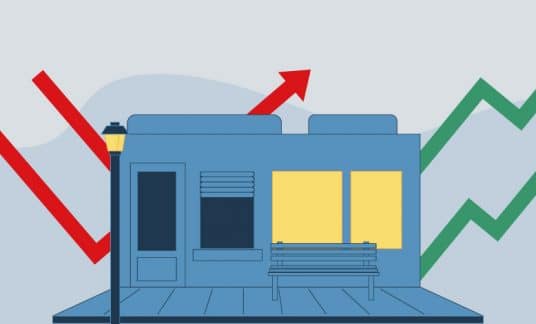When your small business starts turning a profit, what do you do? Reinvesting small business profits back into your company is the best way to ensure its longevity.
While more short-sighted business owners might become complacent once they start generating substantial profits, every successful entrepreneur should look to the future when deciding where to allocate their new cash inflows.
If your business has recently become profitable, you may be considering reinvesting your earnings to drive development.
Reinvesting 101
Reinvesting happens when net profits — the income left over after all operating costs and overhead are paid — are retained and invested in activities or expenses that aim to increase the value of the business. It also can refer to a cash payout to shareholders in the form of a dividend.
Small business owners usually are concerned with using net profits to increase the value of the company over time. As a business expense, reinvested income isn’t taxable.
Where to Reinvest Your Profits
Why would business owners choose to reinvest profits? Cycling cash through the business can help you fund more projects and ensure future growth.
It isn’t always clear where you should be putting your profits to work. Depending on your business’s growth stage, you may be better served by starting small and upgrading your website’s servers and hosting. Or it may be wiser to hire a high-level employee or even purchase one of your competitor’s assets outright.
We’ll break down 6 areas where profits should be allocated when reinvested.
- Marketing and Advertising
- New Hires
- Capital Improvements
- External Acquisitions
- A Cash Buffer
- Yourself
1. Marketing and Advertising
There are few line items in a small business’s budget more important than marketing and advertising expenses. Digital marketing is becoming a necessity for small businesses to enter the market and capture a sizable portion of market share.
Leveraging conventional marketing platforms can be costly. This is why online digital marketing is one of the most cost-effective means for increasing a small business’s exposure. Your small business marketing strategy can include:
- Search engine optimization (SEO)
- Content marketing (blogs, videos, etc.)
- Affiliate marketing
- Influencer marketing
- Facebook and Google ads
- Email marketing
2. New Hires
Investing in human capital is a necessary expense for any small business that wants to ensure its long-term growth. The expertise required to build and lead your team is invaluable, so reinvest profits into hiring new personnel.
Retaining your top talent is equally important. We recommend reinvesting in your business by providing training opportunities and other benefits to your employees. This way, your team will be more motivated to stay on board and will be better equipped to face new challenges.
3. Capital Improvements
Reinvesting small business profits can also help with the purchase of new infrastructure, personnel, tangible assets (like company vehicles) and equipment. Spending on capital upgrades isn’t only a wise decision for small businesses, but it’s usually long overdue when it happens.
For instance, if your product is manufactured overseas and you’ve been receiving complaints about the build quality of the material, you should consider switching to a higher-cost producer. This is just one case of an overdue capital improvement investment that can lead to higher profits in the long run.
4. External Acquisitions
Many small businesses lack the cash flow for acquiring other businesses or their assets. However, as your business expands, one of the best long-term decisions you can make is to buy the rights to (or outright acquire) another company’s assets to add to your portfolio.
Mergers and acquisitions are complex — but they tend to pay off when companies leverage them effectively to acquire greater market share. Facebook is an excellent example of a company that was able to acquire some of its fiercest competitors, including Instagram and WhatsApp, and add their technologies to its services.
5. A Cash Buffer
One of the best ways to safeguard against early failure is to amass a nest egg for business emergencies. Many entrepreneurs enter the market with the assumption that their startup capital will be enough to last them through to self-sufficiency. This isn’t always the case.
Consider building a contingency fund. This money will be there as emergency liquidity if disaster strikes. For peace of mind, we recommend having a nest egg for the following unplanned contingencies:
- Cash-flow issues
- To capitalize on low prices
- Buying out a competitor
- Rent increases
- Tax bills
- Penalties and fines
Accountants refer to emergency funds as “retained earnings” because they are exactly that: profits that are held in reserve for undetermined future use. This “just in case” cash fund should be seen as a deferred reinvestment of your profits, only for use later.
6. Yourself
Knowing how to reinvest profits into your business starts with recognizing your worth as the leader of your company. If you view your role as being more hands-off than other business owners, you still should prioritize the development of your skills and personal assets if you expect the company to develop too.
For instance, taking continuing education classes at a local business school or enrolling in a professional development workshop can help you hone the “soft skills” needed to succeed as an entrepreneur.
What Are the Advantages and Disadvantages of Retaining Earnings?
Distributing profits back into your company can result in a range of benefits. Allocating profits toward capital improvements can help keep expenses low in the long run. Plus, nothing shows that you have faith in your company than taking a pay cut to improve its long-term standing.
Reinvesting helps keep the ownership of the business in your own hands. Financing capital projects and other expenses by selling shares to investors dilutes the ownership of the company, which means you will have less control over your own business.
The downside of reinvesting too early is that it can have a high personal cost. Many business owners rely on their company’s net profits to sustain themselves.
Reinvesting small business profits when net earnings are low can cause financial uncertainty for some entrepreneurs.
Reinvesting: The Smart Strategy
There are multiple uses of profits in business. Reinvesting is often the smart move.
When profits first start to trickle in, inexperienced small business owners may treat themselves to lavish rewards and loosen the belt a little too much instead of making their hard-earned money work for them.
Businesses should always look to the future with long-term sustainability in mind.
Reinvesting profits into business should be seen as “paying it forward” since you will reap the reward in future earnings. This is why we recommend taking your initial profits and using them to expand your product range, hire new staff or make other investments.
Startups and small businesses can’t afford to be complacent. Every reinvestment in your organization represents an opportunity to add an interest-free cash infusion to your balance sheet that will create lasting value for your business.












